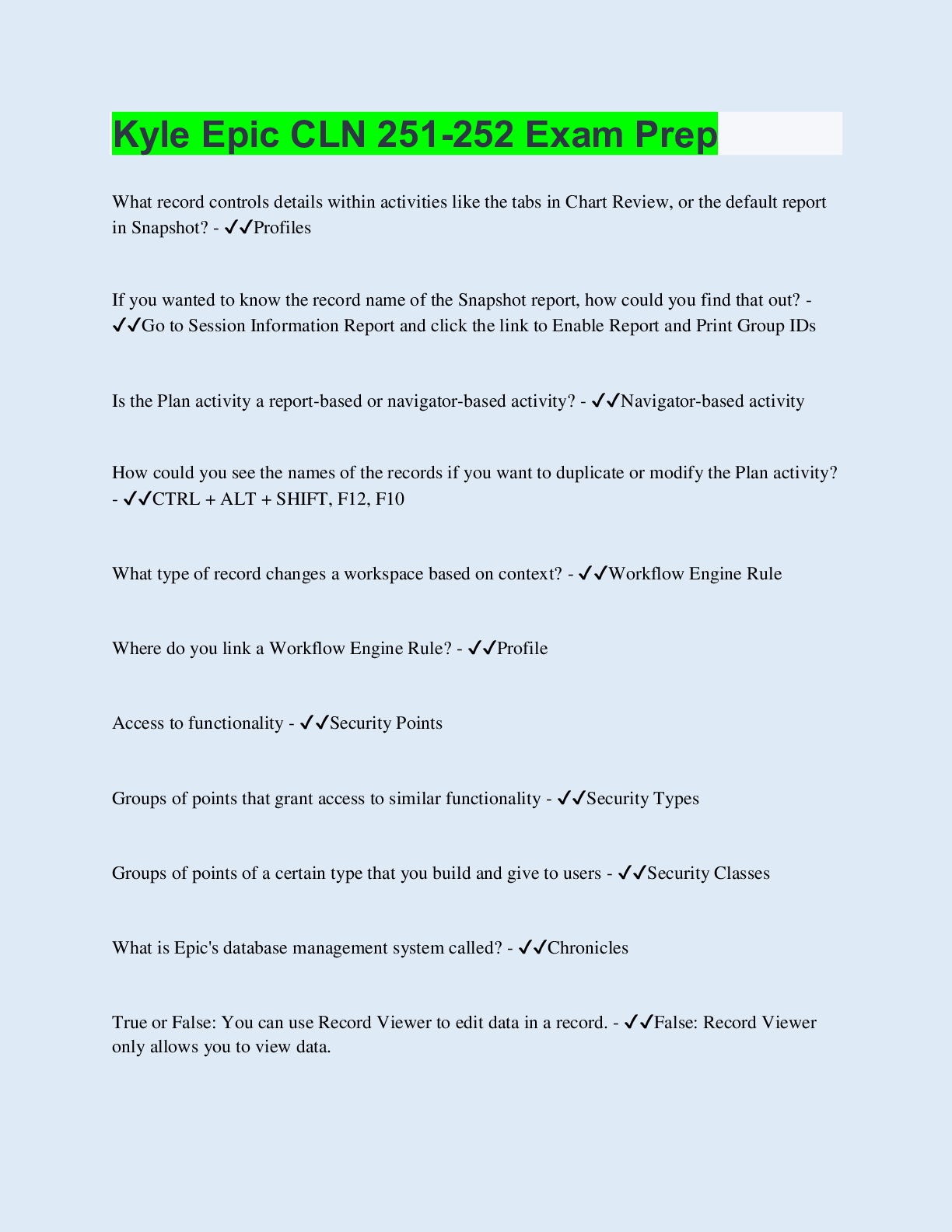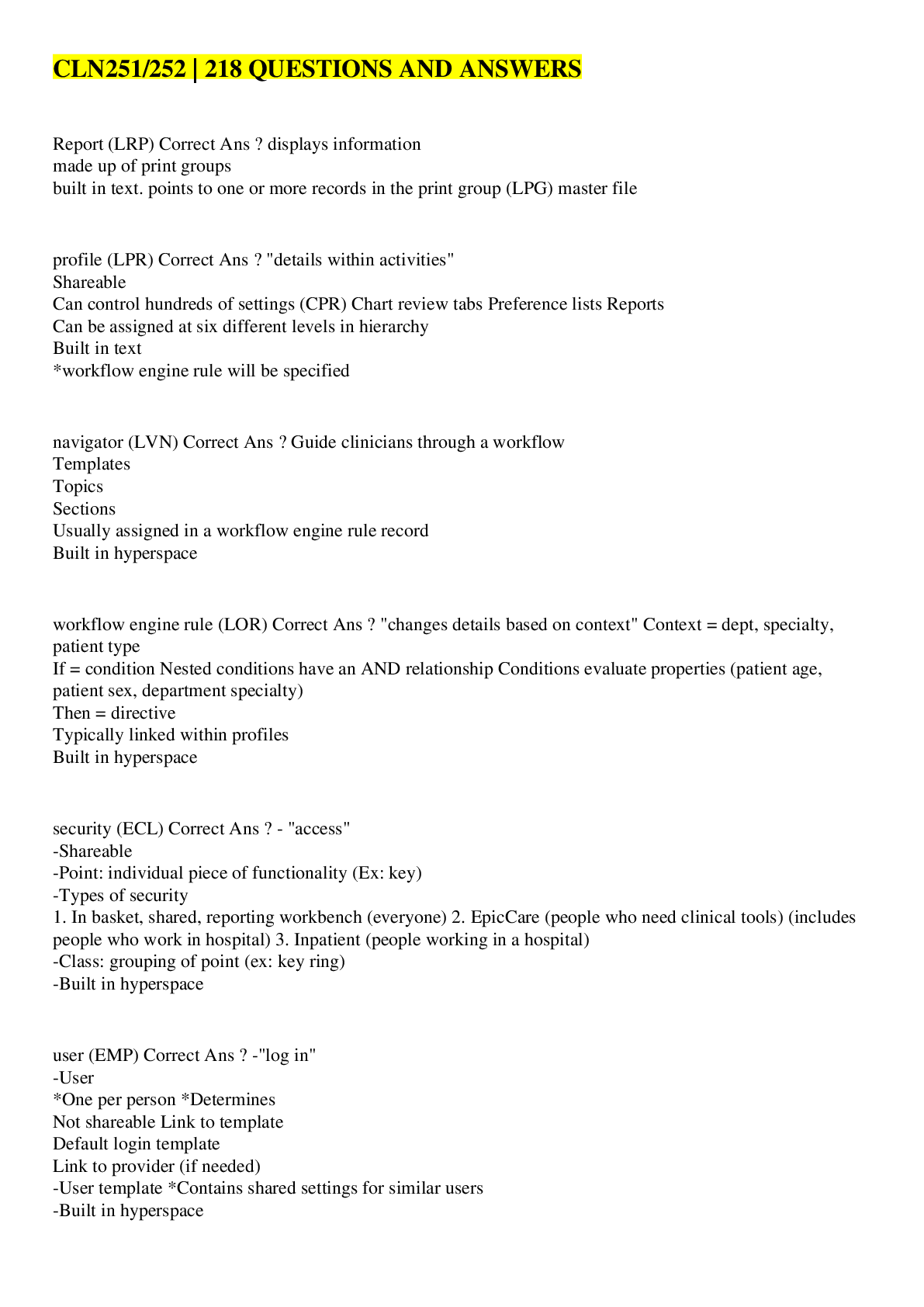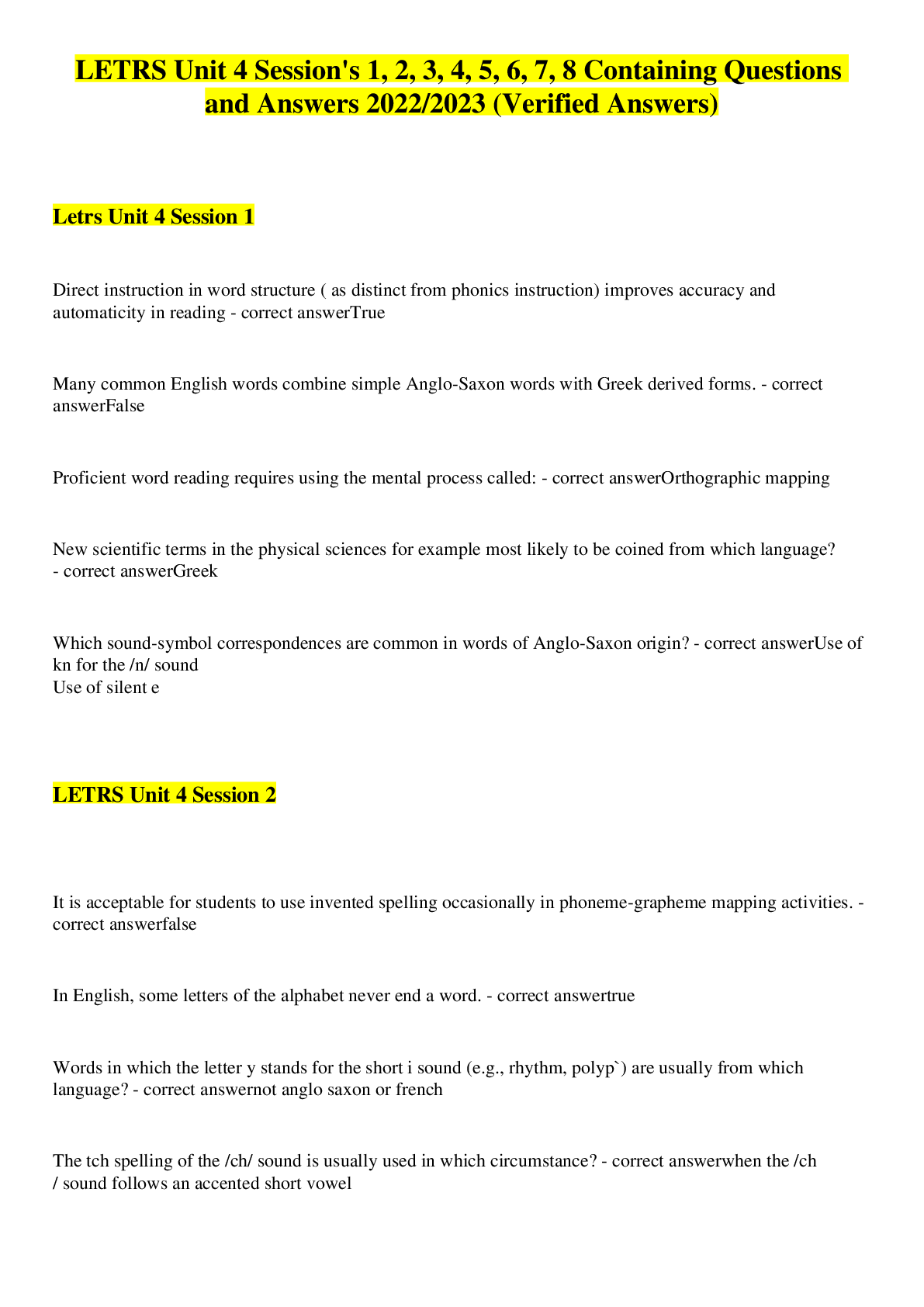Health Care > EXAM > ANCC PMHNP EXAM CHPT 4 QUESTIONS AND ANSWERS (All)
ANCC PMHNP EXAM CHPT 4 QUESTIONS AND ANSWERS
Document Content and Description Below
ANCC PMHNP EXAM CHPT 4 The nurse practitioner is educated to lead interdisciplinary treatment teams correct ans: The nurse practitioner is educated to lead interdisciplinary treatment teams * Ac... ts as full partner in health care * Designs, implements, evaluates, and advocates to redesign the U.S. healthcare system * Translates research into practice Team leadership model correct ans: Team leadership model Decision 1: Should the leader monitor the team or take action? * Seek out information to understand the team * Analyze information * Interpret the information and decide how to act Decision 2: Should the leader intervene to meet the task or relational need? * Performance functions * Task functions Decision 3: Should the leader intervene internally or externally? Assess for conflicts between group members—action to maintain group performance * Assess for unclear goals * Assess for proper support (Northouse, 2007, pp. 209-234) Reflective Practice correct ans: Reflective Practice * Reflection uses a model or framework to systematically "make sense of experience" (Sherwood & Horton-Deutsch, 2012, p. 4). * Process to tell a story about self and others to gain insight into practice * Enhances critical thinking to problem-solve and enhance clinical reasoning and decision-making * Link theory to practice Conflict Resolution, Negotiation, Mediation, and Professional Civility correct ans: Conflict Resolution, Negotiation, Mediation, and Professional Civility * Conflict: occurs when a person believes his or her needs, interests, or values are incompatible with others' * Conflict resolution: directed by a neutral third party who facilitates a "win-win" situation * Negotiation: discussion among two or more people with the goal of reaching an agreement * Mediation: voluntary and confidential process in which a third party facilitates discussion to reach an agreement * Arbitration: process in which a third party reviews evidence from both sides and makes a decision to settle the case * Professional civility: behavior that shows respect toward another person Critical Thinking correct ans: Critical Thinking * Defined as the acquisition of knowledge with an attitude of deliberate inquiry * Making clinical decisions based on evidence-based practice ** Decreases the difficulty of choosing from conflicting or multiple recommendations when diagnosing and treating clients * Develops self-awareness though a metacognitive process to gain new insights about self, and in relation to others Research utilization correct ans: Research utilization: Process of synthesizing, disseminating, and using research-generated knowledge to make a change in practices; a subset of the broader evidence based practice Evidence-based practice: correct ans: Evidence-based practice: The integration of best research evidence with clinical expertise and client values and needs. PMHNPs need to know the effectiveness of evidence-based interventions and select the intervention to meet the client need (Perese, 2012, p. 29). Research utilization and evidence-based practice are two models for reducing the gap between research findings and application to practice correct ans: Research utilization and evidence-based practice are two models for reducing the gap between research findings and application to practice Research utilization process * Critique research * Synthesize the findings * Apply the findings * Measure the outcomes PICO correct ans: Develop a clinical question using the PICO method P = patient, population of patients, problem I = intervention C = comparison (another treatment or therapy, placebo) O = outcome Systematically search for relevant research evidence correct ans: Systematically search for relevant research evidence * Critique the research evidence Quanitative hierarchy (Fineout-Overholt, Melnyk, & Schultz, 2005) 1. Randomized controlled trials (RCT), meta-analysis, or systematic review 2. Evidence-based guidelines based on systematic review 3. Evidence from RCT without randomization 4. Evidence from systemic review of descriptive and qualitative studies 5. Evidence from expert opinion or committee reports * Qualtitative hierarchy (Fineout-Overholt, Melnyk, & Schultz, 2005) 1. Evidence from systematic reviews of descriptive and qualitative studies 2. Evidence from a single descriptive or qualitative study 3. Evidence from expert opinion or committee 4. Evidence-based guideline based on systematic review of RCTs 5. Evidence from well-designed controlled trials without randomization 6. Systematic reviews or meta-analysis 7. Evidence from at least one well-designed RCT Make an evidence-based decision regarding implementation Implement the change, depending on the above decision Evaluate the change Dissemination correct ans: Dissemination * Present at local, regional, and national conferences * Publish in peer-reviewed journals * Publish in professional newsletters (Melnyk, Fineout-Overholt, Stillwell, & Williamson, 2010) Internal validity correct ans: The independent variable (the treatment) caused a change in the dependent variable (the outcome) External validity correct ans: The sample is representative of the population and the results can be generalized Descriptive statistics correct ans: Used to describe the basic features of the data in the study; numerical values that summarize, organize, and describe observations; can be generated by either quantitative or qualitative studies Examples include * Mean: Average of scores * Standard deviation: Indication of the possible deviations from the mean * Variance: How the values are dispersed around the mean; the larger the variance, the larger the dispersion of scores Inferential statistics correct ans: Numerical values that enable one to reach conclusions that extend beyond the immediate data alone; generated by quantitative research designs Examples include * t test: Assesses whether the means of two groups are statistically different from each other * Analysis of variance (ANOVA): Tests the differences among three or more groups * Pearson's r correlation: Tests the relationship between two variables * Probability: Likelihood of an event occurring; lies between 0 and 1; an impossible event has a probability of 0, and a certain event has a probability of 1 * P value: Also known as level of significance; describes the probability of a particular result occurring by chance alone (if P = .01, there is a 1% probability of obtaining a result by chance alone) Institutional Review Boards (IRBs) ensure that correct ans: Risks to participants are minimized, Participant selection is equitable, Adverse events are reported and risks and benefits are reevaluated, Informed consent is obtained and documented, Data and safety monitoring plans are implemented when indicated, and Overall, that the rights and welfare of human research participants are protected, and has the authority to approve, require modifications, or disapprove of any research activities. All investigators or persons involved in research studies must take and pass a test on protection of human participants QUALITY IMPROVEMENT correct ans: Agency-specific projects that aim to improve systems, decrease cost, and improve productivity Provides standardized method to identify gaps in practice and systems to evaluate ways to improve structure, function, and resources in care delivery within complex health systems Institute of Medicine's quality aims (IOM, 2001) * Safe * Effective * Client-centered * Timely * Efficient * Equitable Examine internal processes New knowledge is specific to an organization Donabedian model * Structure * Process * Outcome Process of quality improvement can be PDSA cycle: * Plan: Plan the change [Show More]
Last updated: 1 year ago
Preview 1 out of 8 pages
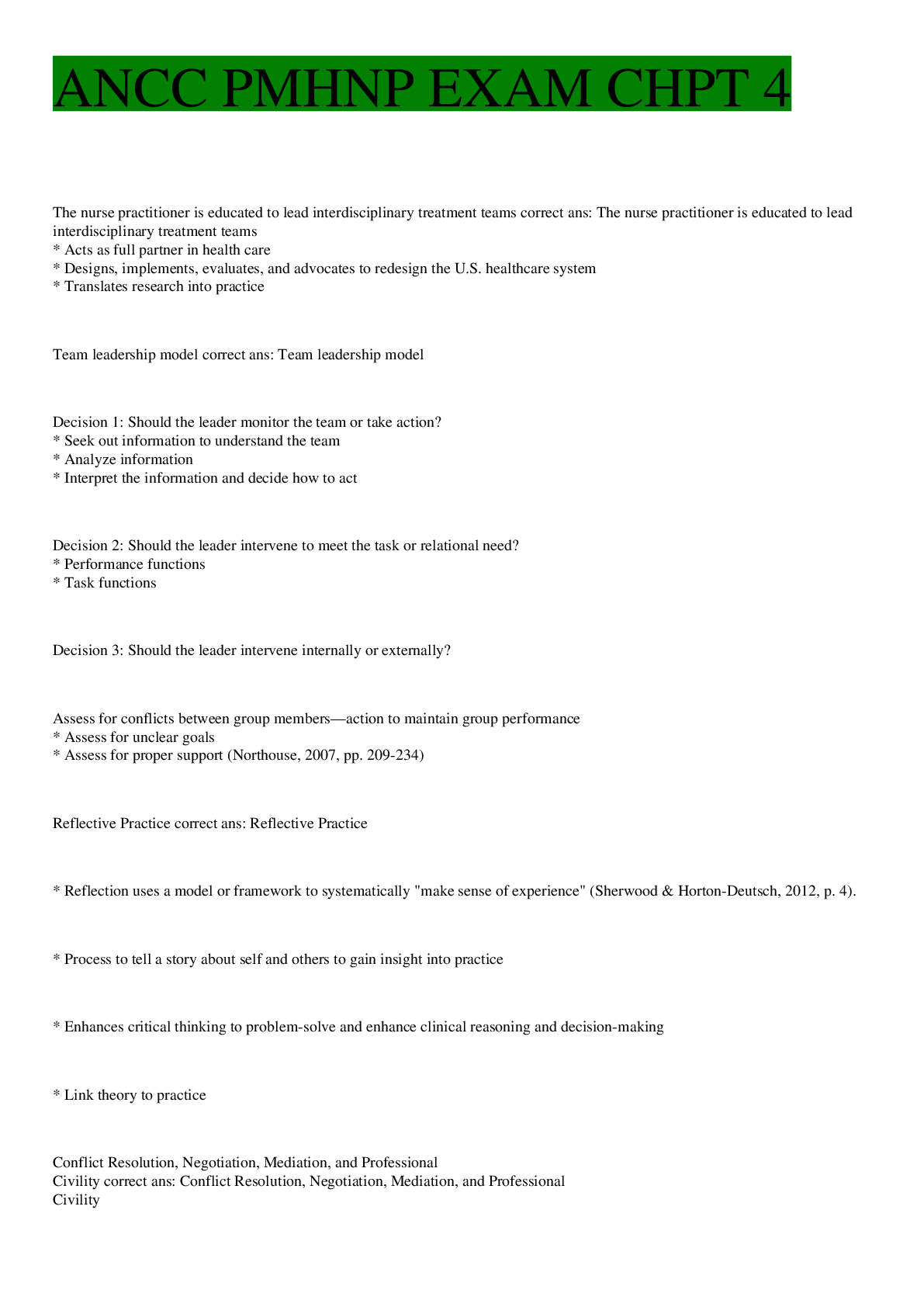
Reviews( 0 )
Document information
Connected school, study & course
About the document
Uploaded On
Jul 04, 2022
Number of pages
8
Written in
Additional information
This document has been written for:
Uploaded
Jul 04, 2022
Downloads
0
Views
41


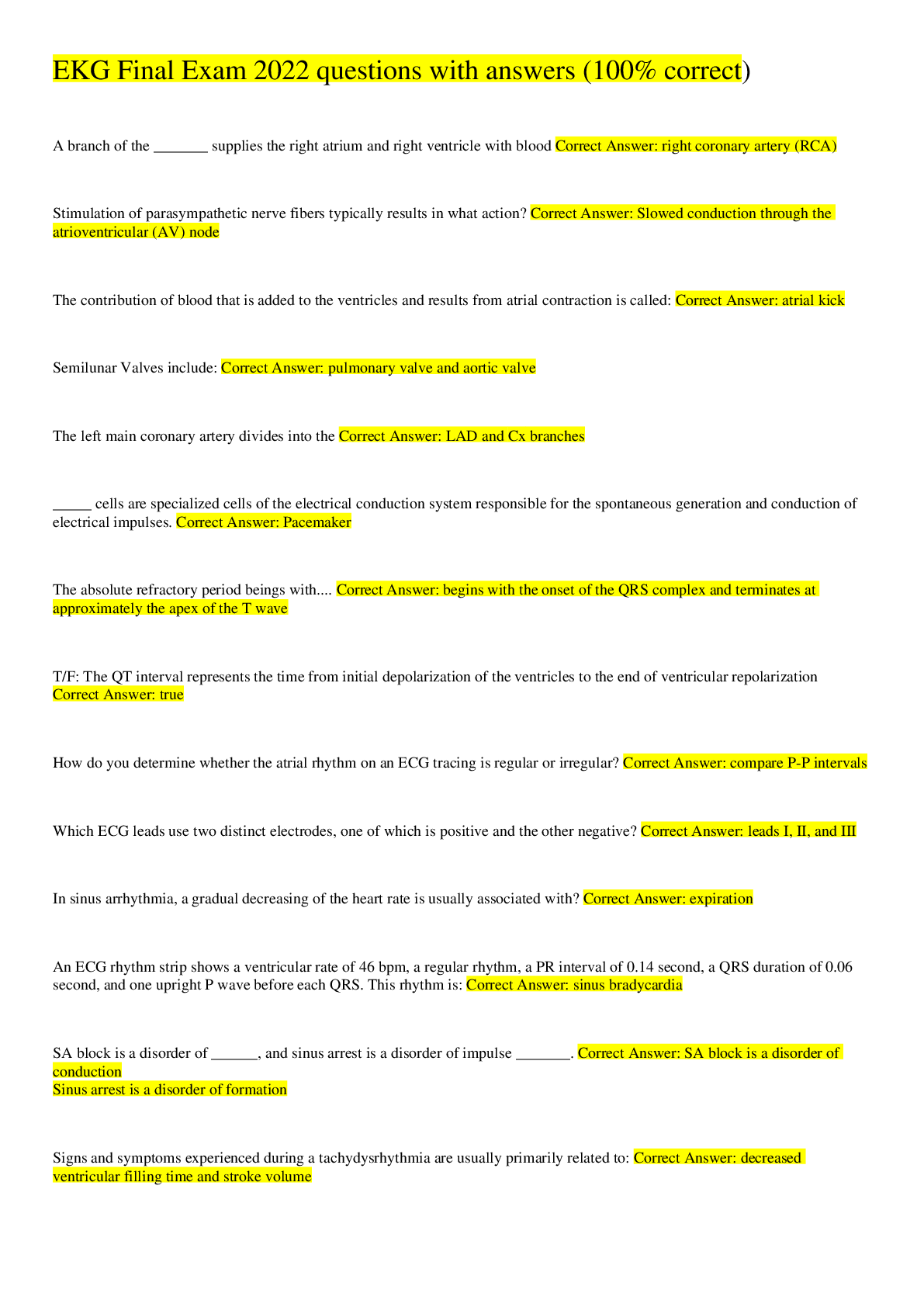
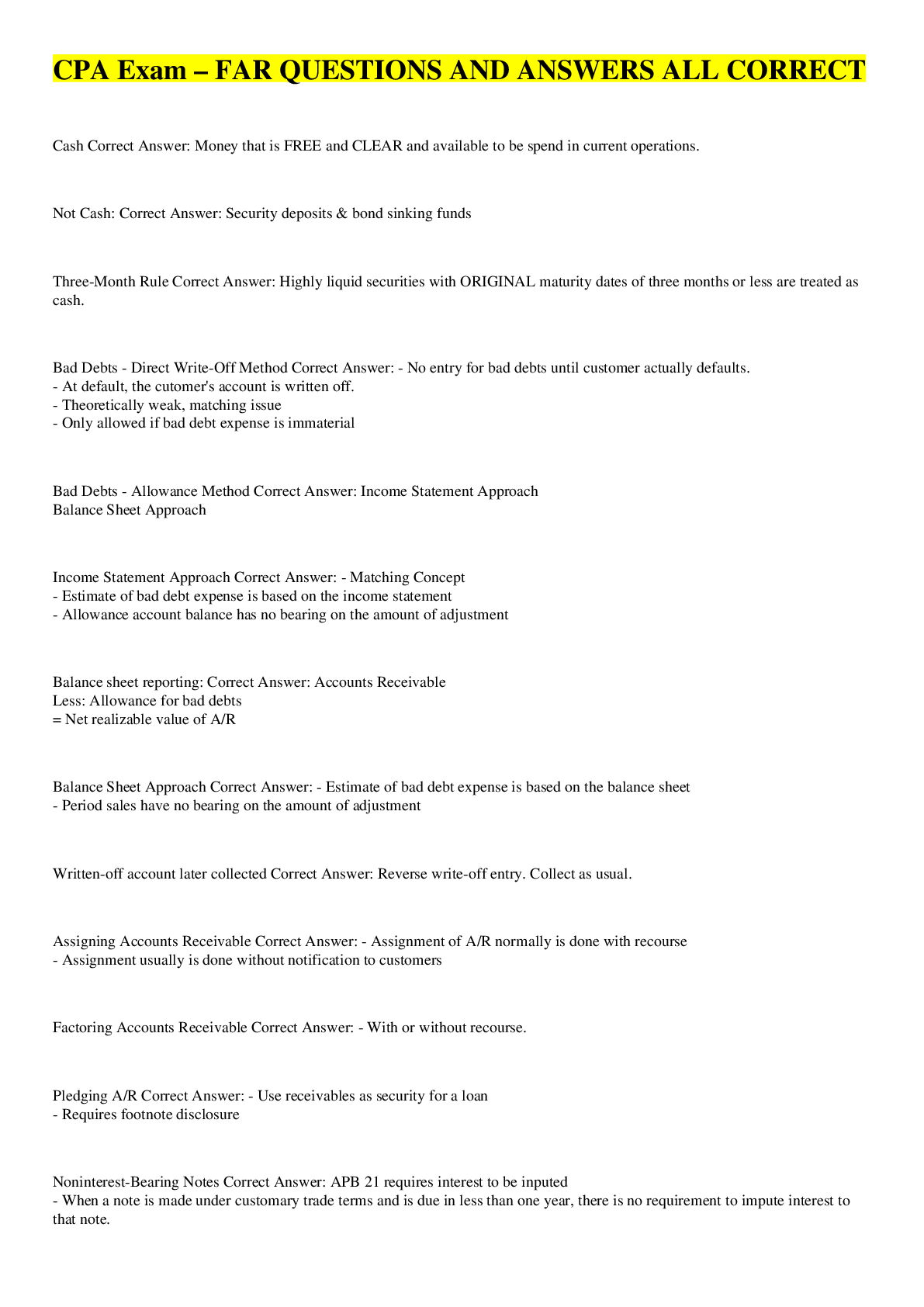
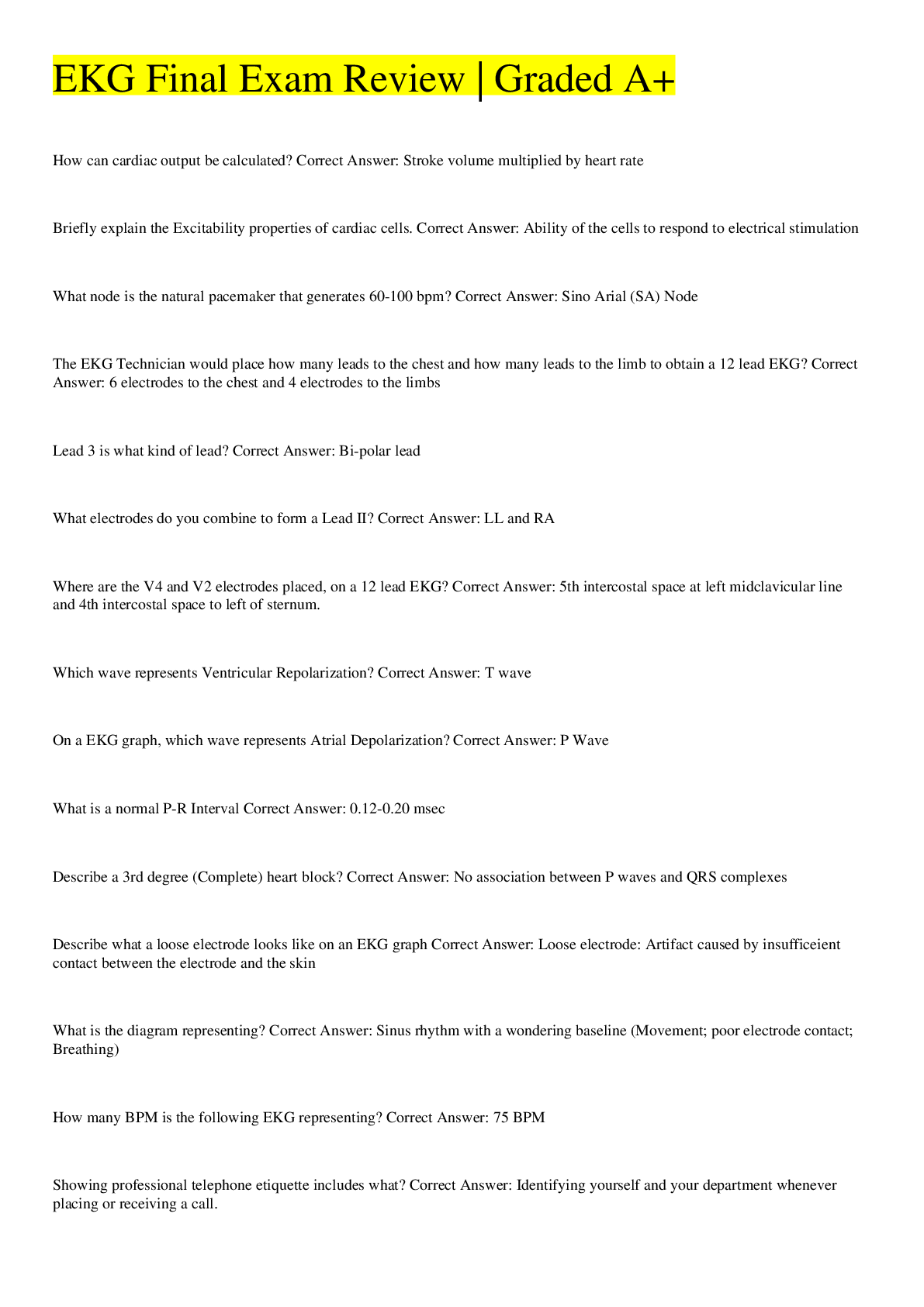
.png)

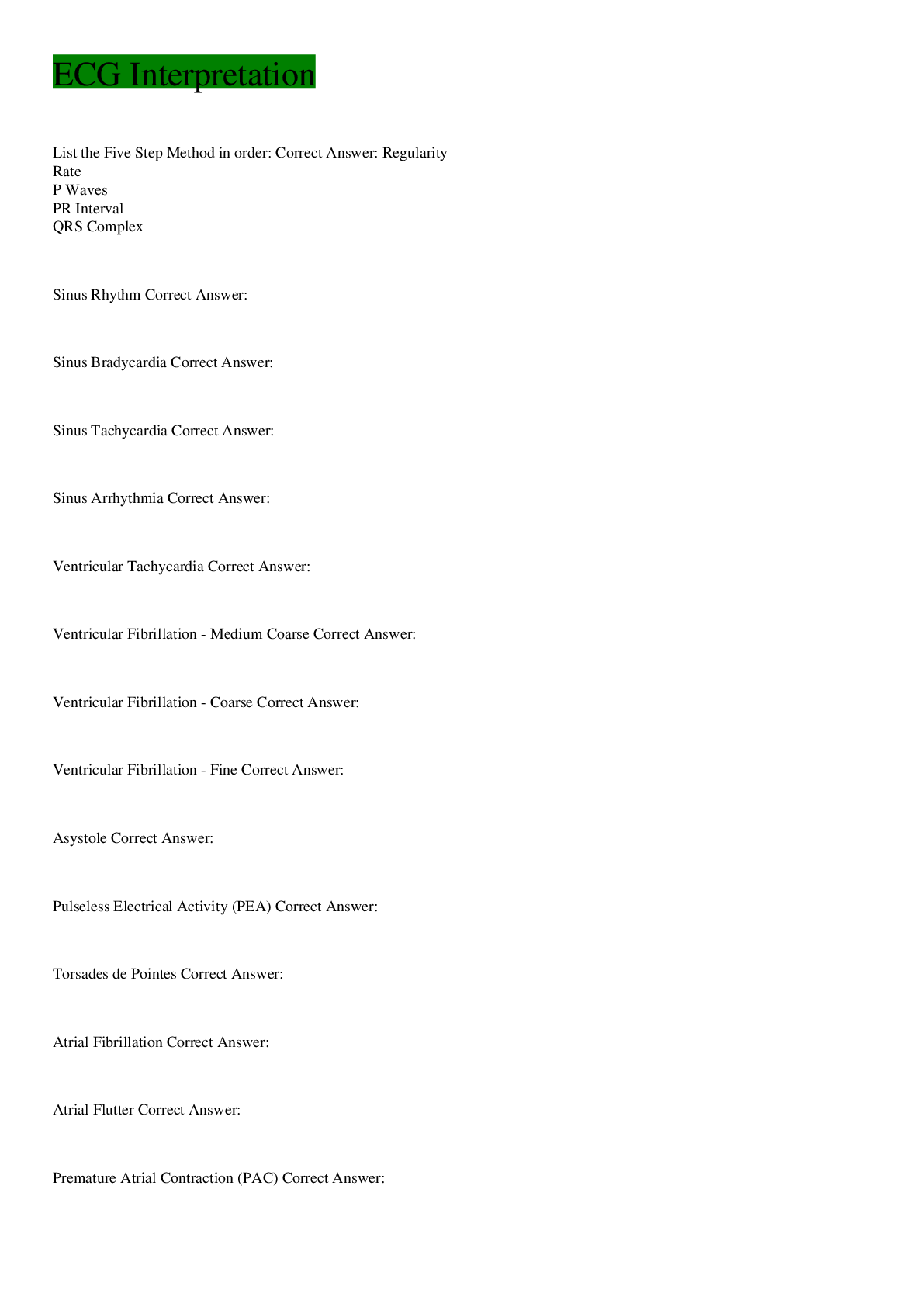
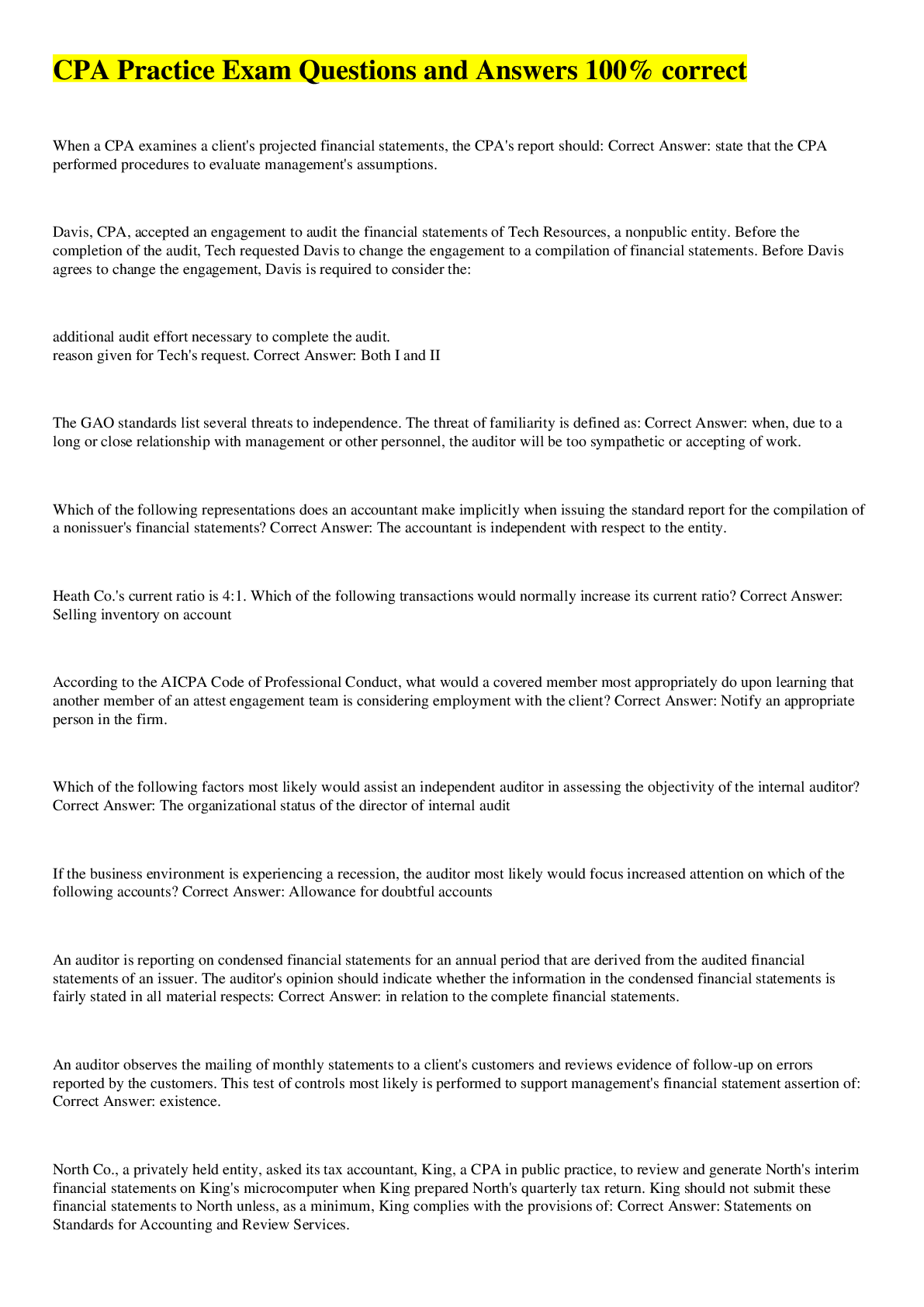
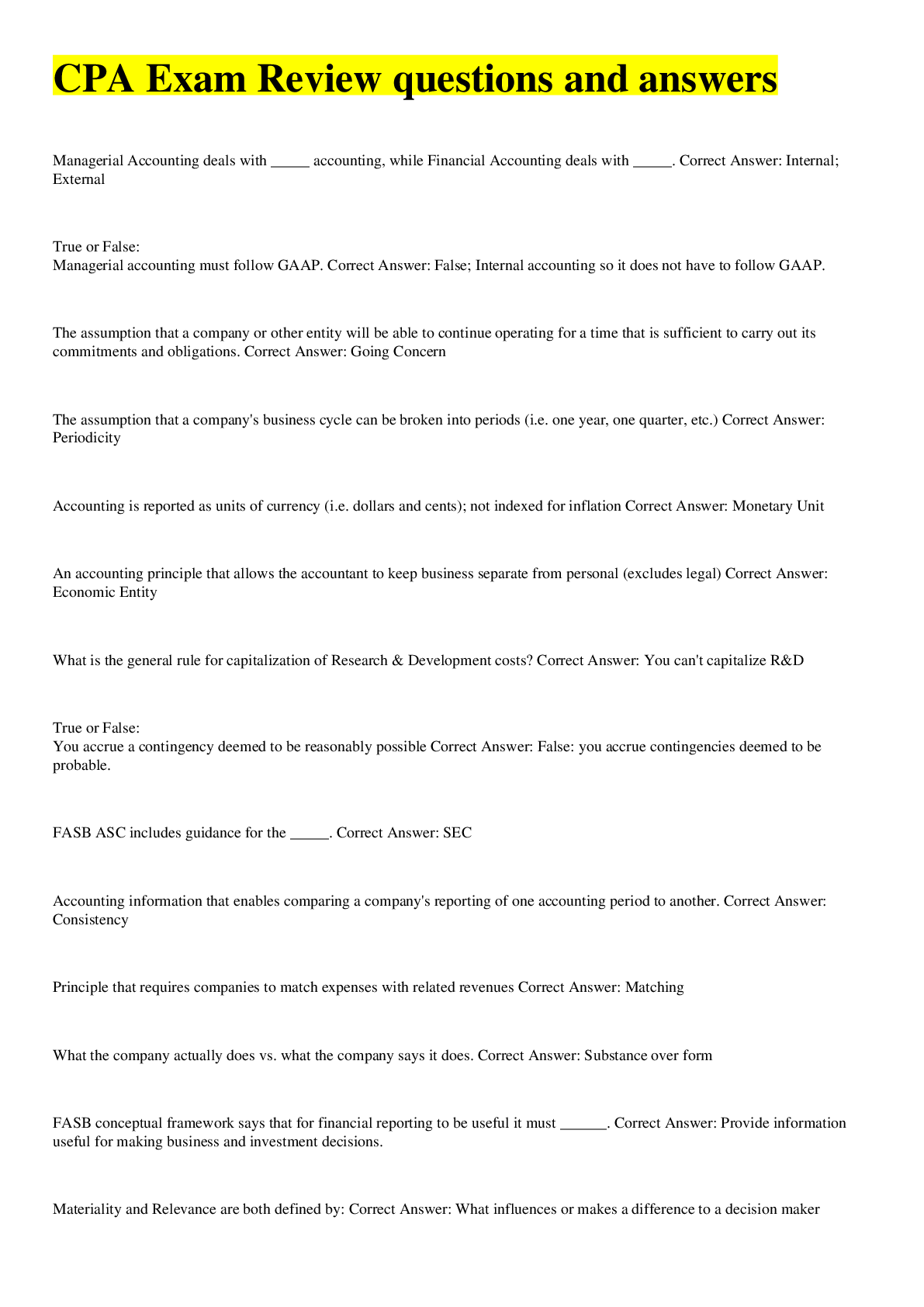


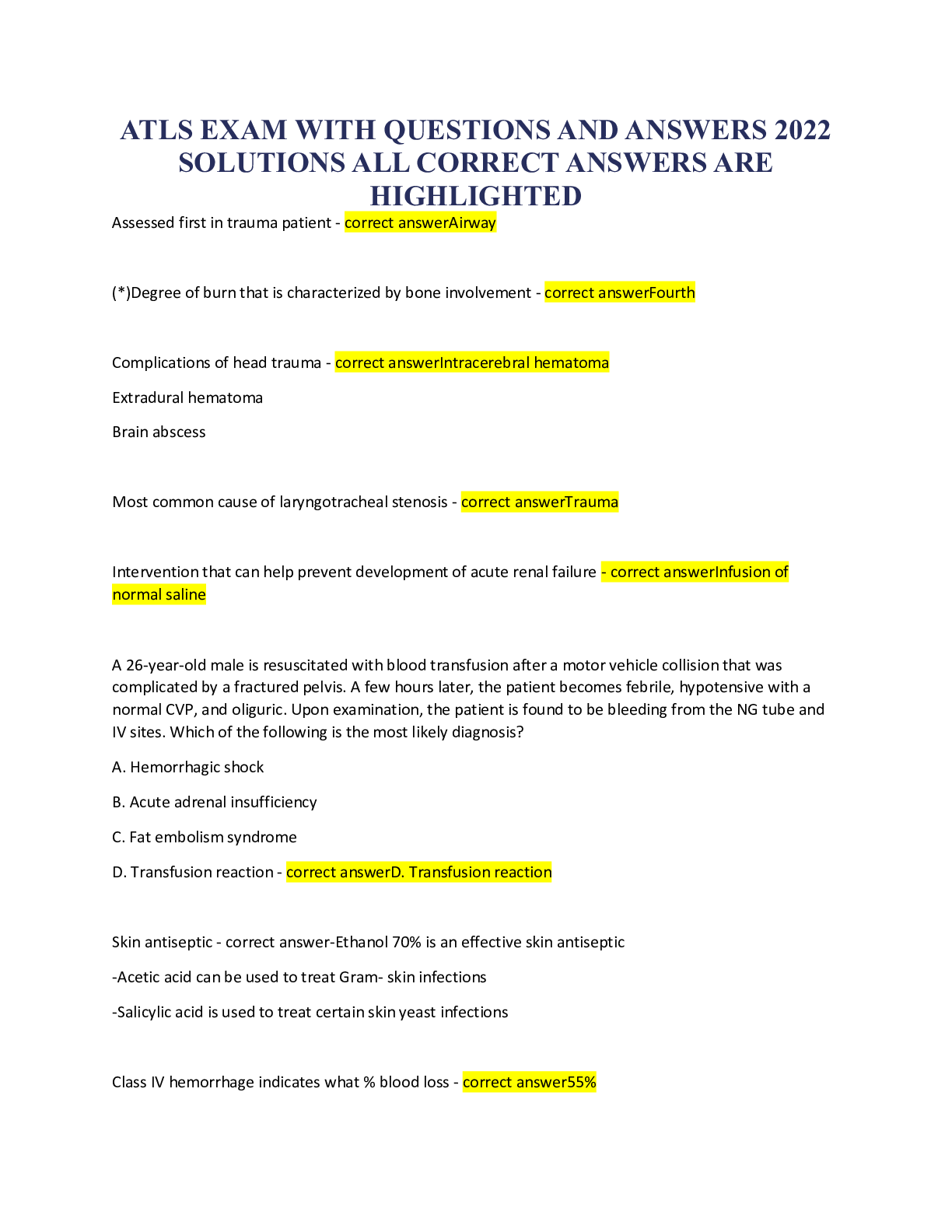

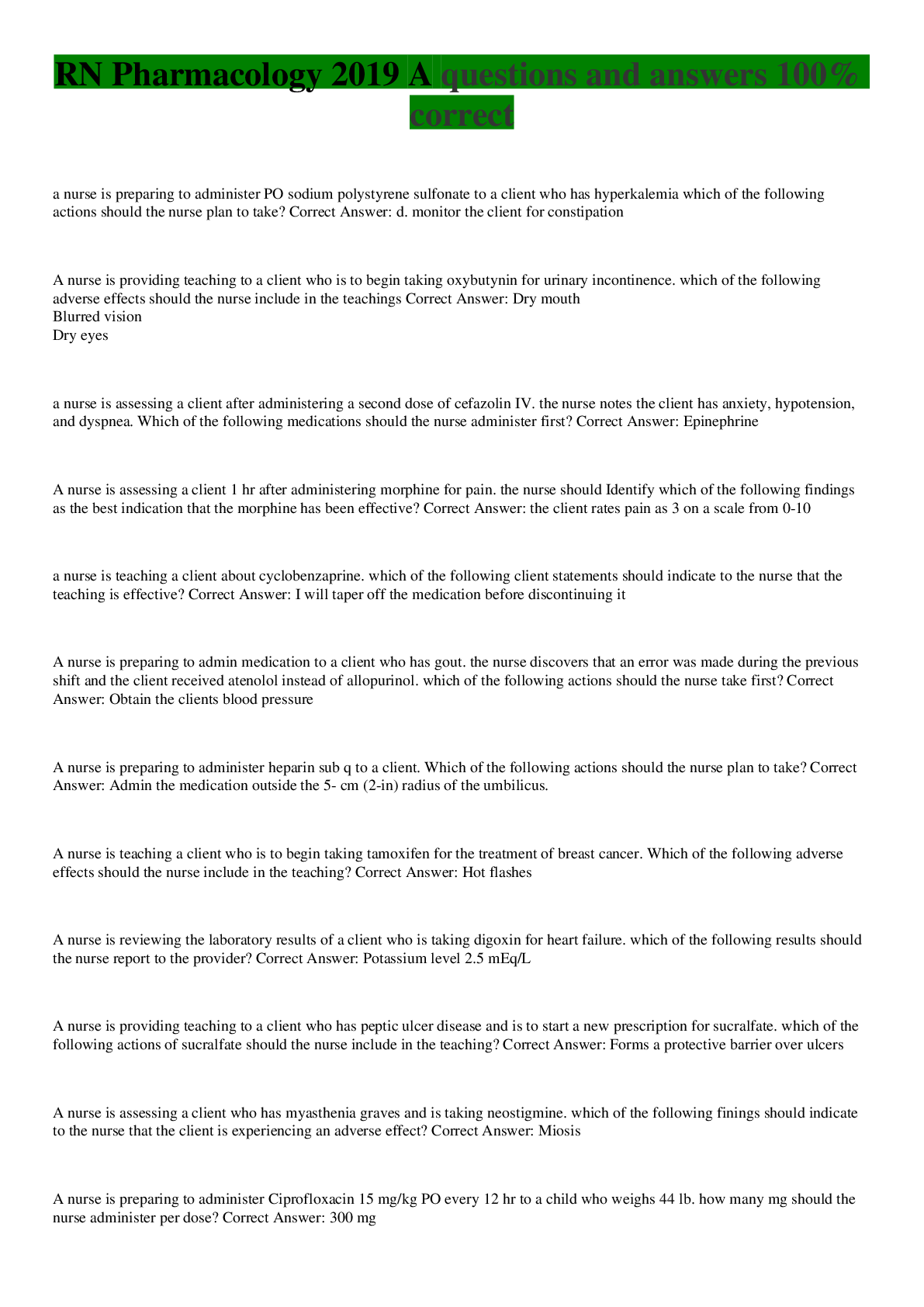
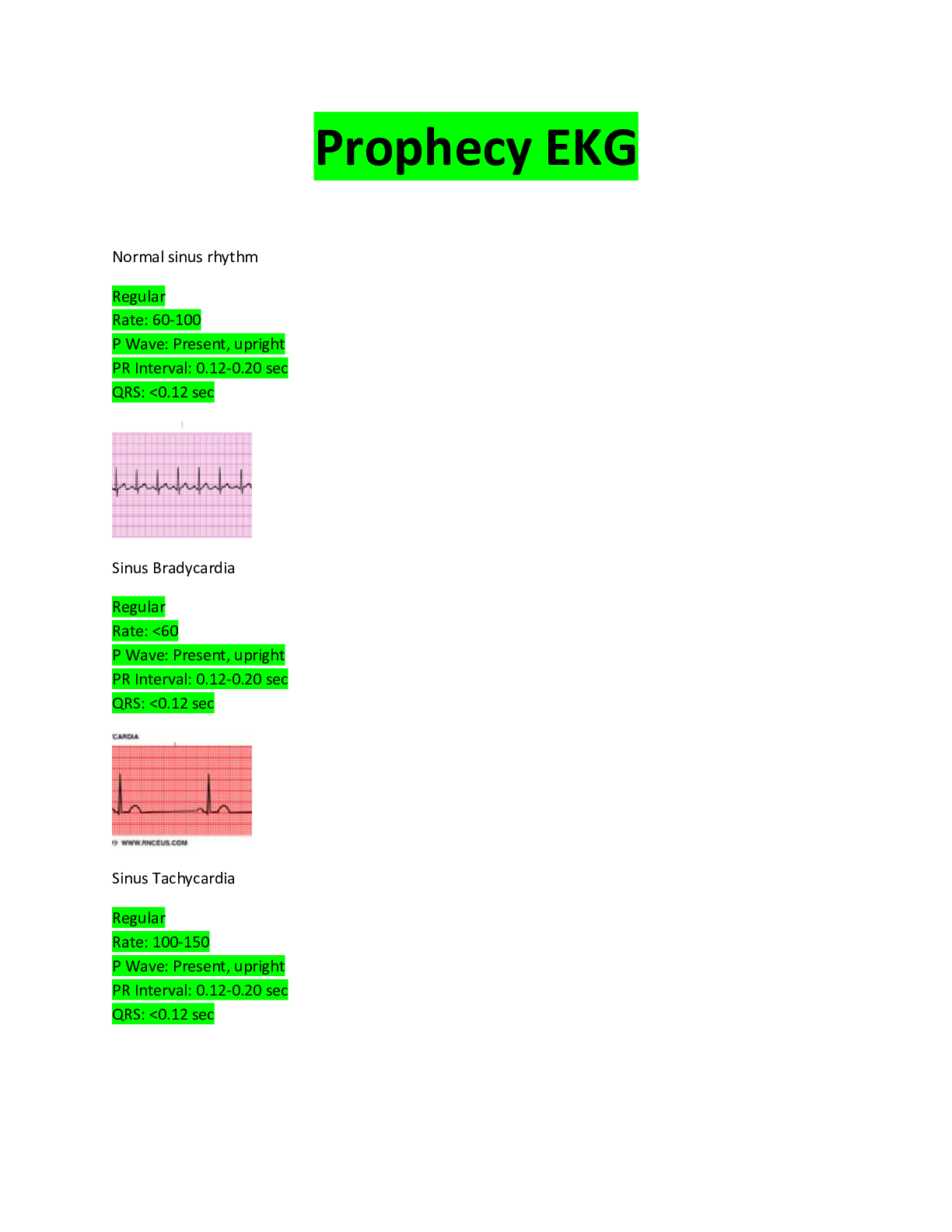



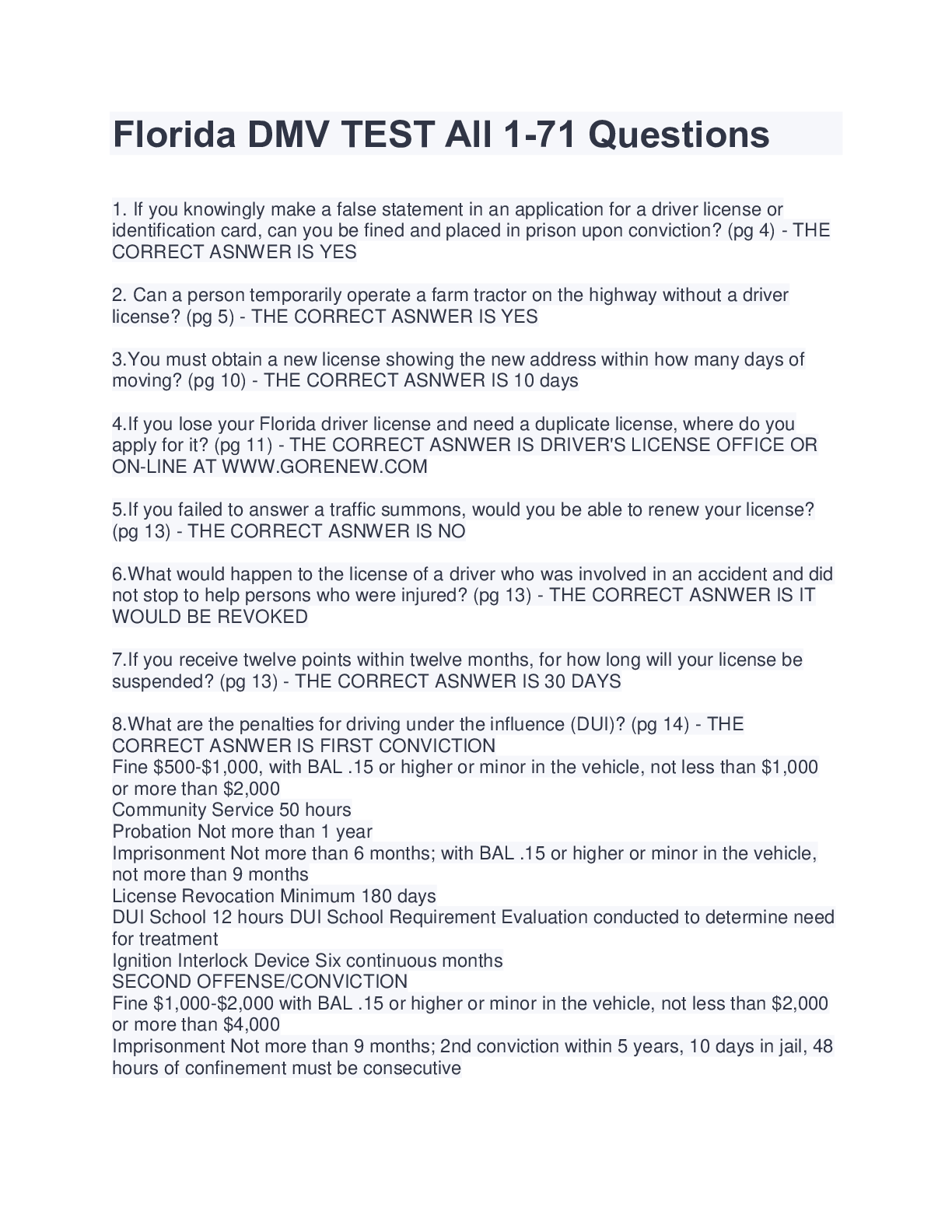
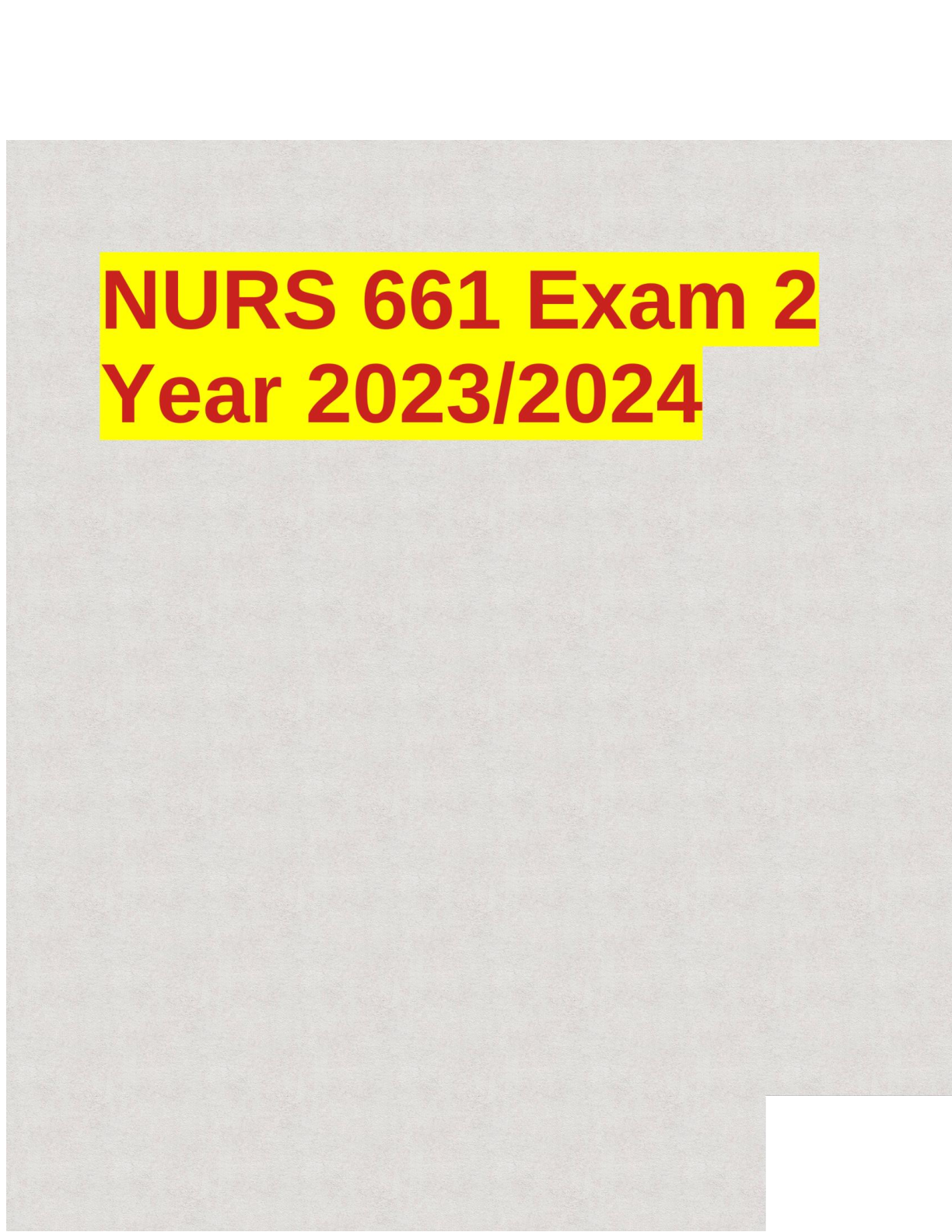

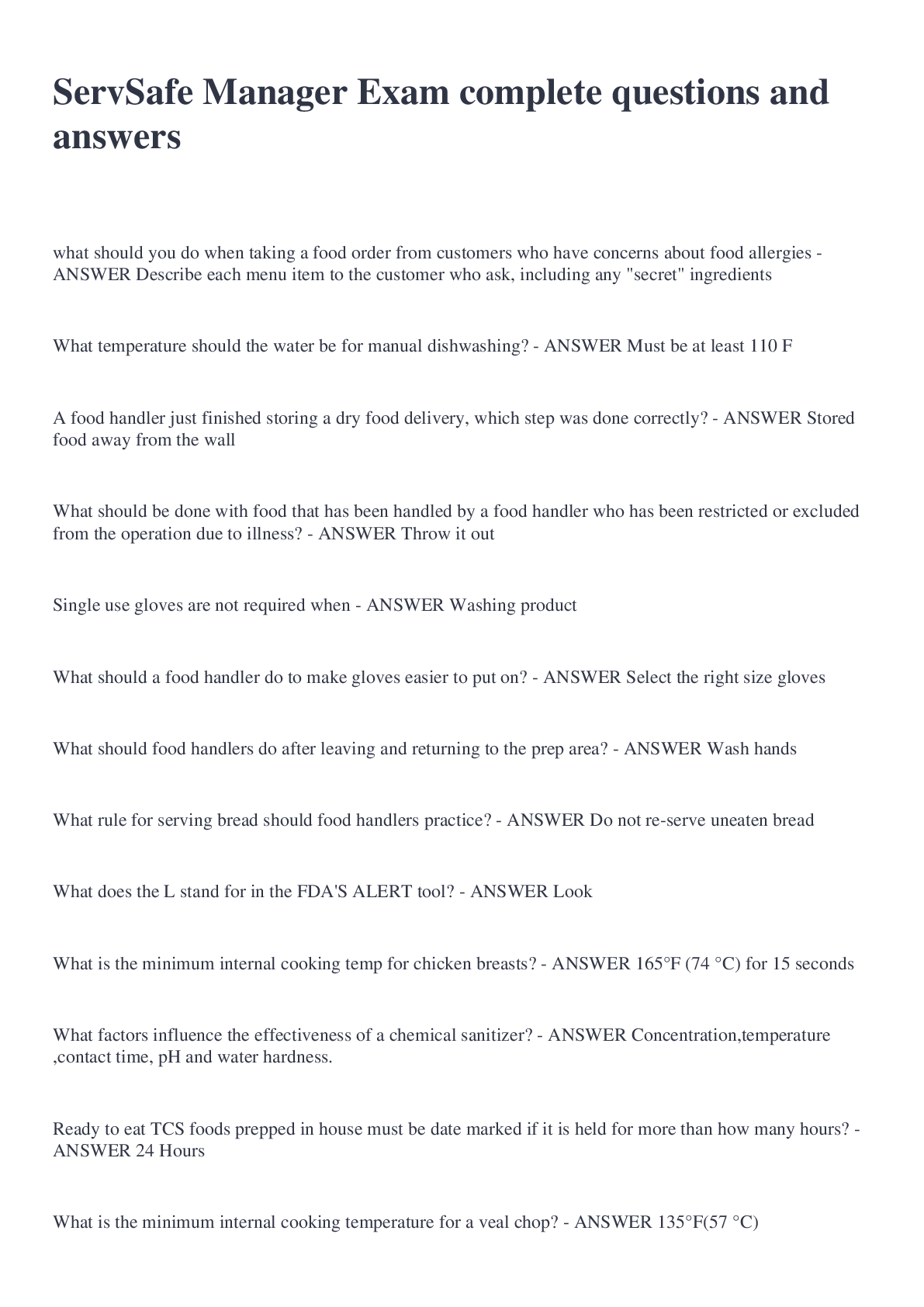


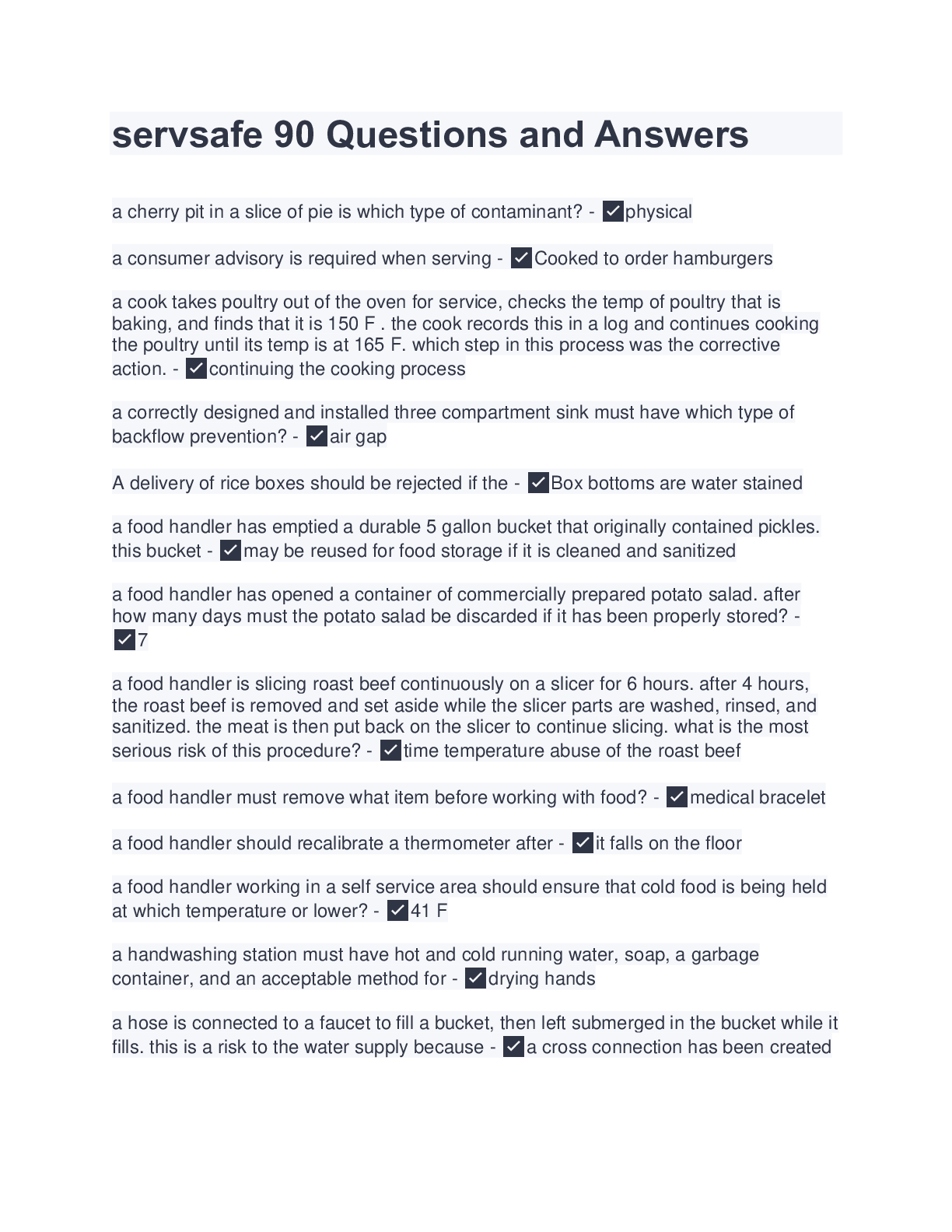
.png)


